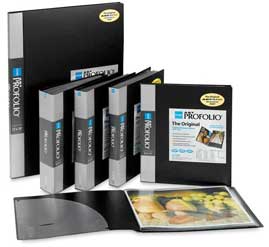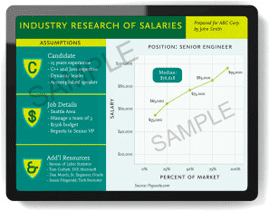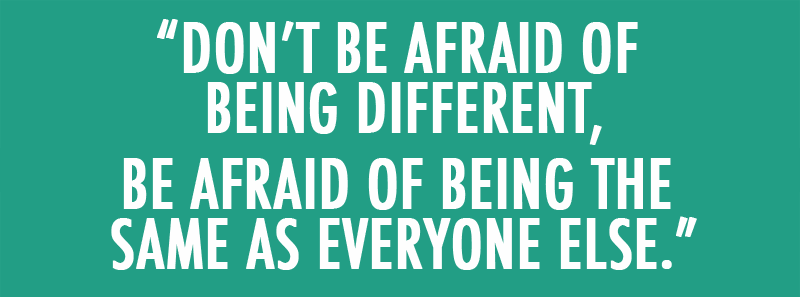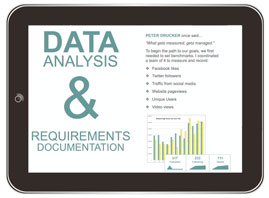To earn more money, bring these documents to your interview (Hint: it’s not your resume)
Welcome to class 3 of Salary Negotiation Fast Class, where you’ll learn the skills you need to get paid what you’re worth in just 7 days.
In the past few days, I’ve helped you get in the right mindset and determine your worth. You might have noticed a slight trend underlying both lessons:
Here’s what I mean:
- Mindset: We saw that at least half of all professionals are too scared to negotiate, even though the stats prove otherwise. You’re different and are learning key skills.
- Finding your worth: Most people spend less than an hour checking a few websites to find their worth. You gain an advantage by pushing your research beyond that.
- Negotiating: Most people show up to an interview unprepared. You’re going to create 2 unique documents as a way to stand out.
Hint: It’s not your resume, it’s not a hand-scribbled list of accomplishments, and it’s not a note from your mom saying that you deserve more money.
1) Create a Portfolio of your work
Once purely the realm of designers and photographers, having a personal portfolio is a unique way for anyone to show off their accomplishments.
When interviewing for a new job, having a portfolio will make you more memorable and come across as more professional, allowing you to negotiate a higher salary.
When asking for a raise, it’s all about proving your worth over the past year. A portfolio allows you to tell a story of what you’ve accomplished and how you’ve helped the company succeed.
Here’s why it’s important:

I prefer the Itoya Profolio, including the 9 x 12″ model that holds a standard piece of paper very nicely. For less than $15, you’ll have a professional looking showpiece that will blow your interviewer away.
Digital portfolio: The other way to go is to create a presentation for your iPad.
Why a tablet?
- I certainly encourage job-seekers to have their own website and it can live there, but you can never fully count on Wi-Fi access during an interview
- Having it on a laptop is fine too (especially a small and light Macbook Air), but it can be a bit clunky using the keyboard controls, booting it up, and worrying about power
- There’s just something about being able to hand an iPad to the person you’re with and having them elegantly swipe through your accomplishments
- While there are apps and several ways to create it, a simple method is just to create it in Powerpoint, save it as a PDF, and then open it up in iBooks or another viewer
What to include?
If you’re in marketing for instance, you could include examples of:
- Business strategy (marketing plans, creative briefs)
- Marketing materials (websites, banners, e-mails, and newsletters)
- Financial expertise (budgets, reporting, analytics, results)
- Accolades (awards and testimonials)
- Don’t be afraid to have fun with it and add a few human interest elements as well
But what if you’re not in marketing?
Let’s say you’re a Director at a nonprofit… Take photos of the impoverished country you visited when setting up their support program, the people you helped (tell their stories), and report on the results. Assistant event planner? Shoot a quick video of the recent concert or conference you helped organize.
Get creative.
2) Salary Research Document
Remember all the research you did when finding your worth? I suggest compiling your findings in a single, easy-to-read format. When I first set out to find a document like this, I was unhappy with the drab, boring ways that salary information websites presented their reports.

I call it my salary research document, or IRS document — “Industry Research of Salaries.”
This is a one-of-a-kind document that illustrates the research you’ve done on comparable jobs in the market, and it’s effective for several reasons:
- It shows that you’ve actually done your homework, and aren’t just randomly throwing out numbers
- The time and effort you’ve spent sets you apart and makes an impression
- It allows you to work collaboratively with your manager or HR to target the right number
When used properly during a negotiation, it can have a dramatic effect in earning a higher salary.
Class 3 Summary
From your resume to your research, one of the best ways to command a higher salary is to stand out from the pack. One way to do that is to tell your unique story of accomplishments through a portfolio, and then present your salary research when discussing your targeted range.
Coming up tomorrow: What to say when asked for your salary requirements
Fast Class Agenda:
[Class 1] Earning more starts with a negotiation mindset
[Class 2] How much am I worth?
[Class 3] To earn more money, bring these documents to your interview (Hint: it’s not your resume)
[Class 4] What to say when asked for your salary requirements
[Class 5] Negotiation phrases that pay
[Class 6] Will you back down first in this negotiation showdown?
[Class 7] The Aha moment of Salary Negotiation Success



